Discover 15 hidden attractions, cool sights, and unusual things to do in Woonsocket (United States). Don't miss out on these must-see attractions: Stadium Theatre Performing Arts Centre, Woonsocket City Hall, and St. Charles Borromeo Church Complex. Also, be sure to include Museum of Work and Culture in your itinerary.
Below, you can find the list of the most amazing places you should visit in Woonsocket (Rhode Island).
Table of Contents
Stadium Theatre Performing Arts Centre
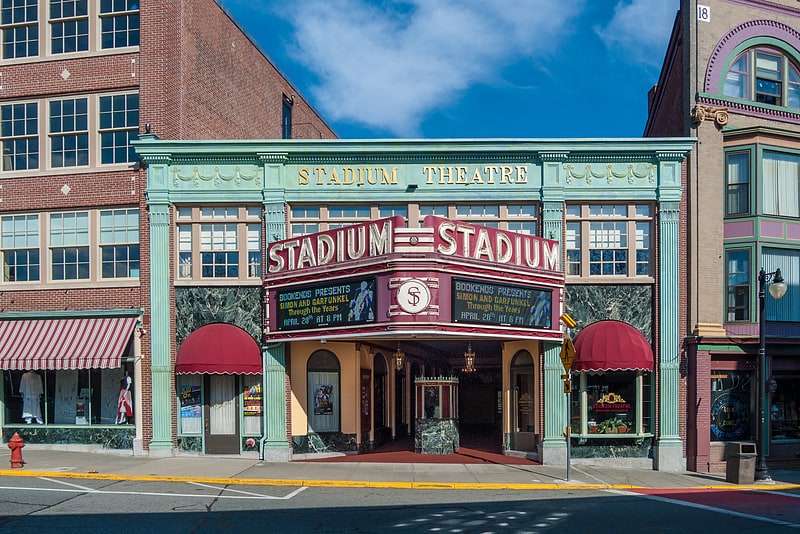
Movie theater in Woonsocket, Rhode Island. The Stadium Theatre Performing Arts Centre & Conservatory is a historic movie theater and concert venue and commercial building at 28 Monument Square in Woonsocket, Rhode Island. The complex consists of two connected sections, one housing the theater, the other offices, both with retail spaces on the ground floor. The theater was designed by Perry and Whipple of Providence and built in 1926.
Initial funding came from Mrs. Norbert Champeau, a widow with interest in the theater, but the project was soon taken over by Arthur I. Darman, a local industrialist. Although it lacked the opulence of theaters in larger cities, it was one of the most elaborately decorated performance spaces in Woonsocket.
The theatre's name comes from the "stadium" style of seating, which allowed everyone in the audience a good view of the stage.[1]
Address: 28 Monument Sq, 02895-3023 Woonsocket
Woonsocket City Hall
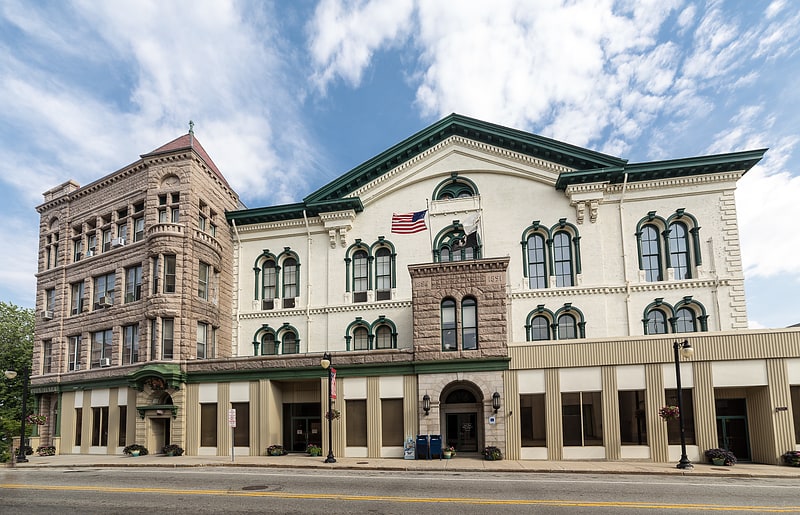
Building in Woonsocket, Rhode Island. The Woonsocket City Hall, is located in Woonsocket, Rhode Island.
Edward Harris, a leading Woonsocket industrialist, constructed the earliest part of the building in 1856, and it was known as the Harris Block, with stores on the first floor, and an auditorium hall seating 1,100 on the third floor. This brick structure has elements of Italianate styling, including round-arch windows and a heavily dentilled cornice. A major Richardsonian Romanesque addition was made to the rear of this structure in 1891. In 1902 the city purchased the building for use as city hall.
The builders of the original building were Albert B. Cole of Woonsocket and a Mr. Slade of Providence. The 1891 addition was built by Cutting & Bishop of Worcester. The architect of neither section is known.
The building served as the first public library in Rhode Island, housed on the second floor, which is now the Woonsocket Harris Public Library.
In March 1860 Abraham Lincoln spoke to a packed crowd in Harris Hall, which at the time contained one of the largest assembly rooms in the state.[2]
Address: 169 Main St, Woonsocket
St. Charles Borromeo Church Complex
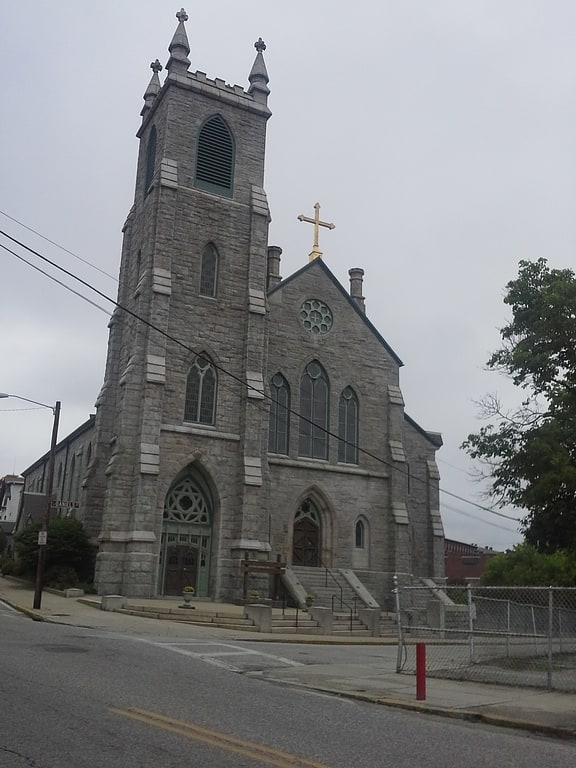
The St. Charles Borromeo Church is a former Roman Catholic parish church in Woonsocket, Rhode Island, located on North Main Street. The parish of St. Charles was canonically suppressed January 12, 2020 and the congregation merged with that of the Church of All Saints, another parish of the Diocese of Providence, although the church remains open as an alternative worship space.[3]
Museum of Work and Culture

Museum in Woonsocket, Rhode Island. The Museum of Work and Culture is a museum in Woonsocket, Rhode Island, that features exhibits focusing on the city's textile manufacturing heritage. The museum is operated by the Rhode Island Historical Society and located at 42 South Main Street in Market Square in the Blackstone River Valley National Heritage Corridor.[4]
Address: 42 S Main St, 02895-4274 Woonsocket
Woonsocket Civil War Monument
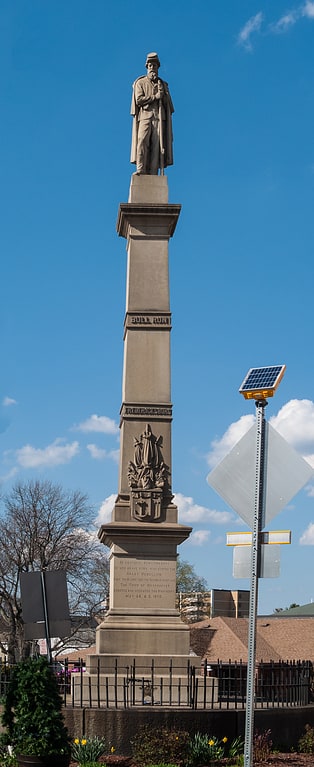
Historical place in Woonsocket, Rhode Island. The Woonsocket Civil War Monument is a historic site at Monument Square in Woonsocket, Rhode Island. It was built to memorialize thirty-nine fallen soldiers from Woonsocket who took part in the Civil War.
Built in 1868 by James G. Batterson, this Civil War memorial was the first Civil War monument constructed in Rhode Island. The monument is made out of granite and is topped with a statue of a Civil War soldier. The names of the battles in which Woonsocket soldiers fought are inscribed on the monument. The monument was added to the National Register of Historic Places in 1982.[5]
Church of the Precious Blood
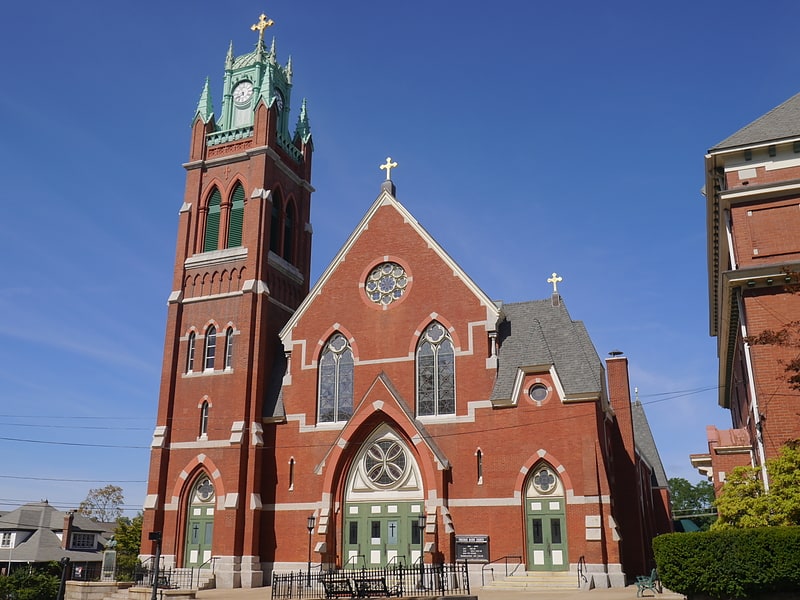
Catholic church in Woonsocket, Rhode Island. L'Église du Précieux Sang (also known as The Church of the Precious Blood is a historic Roman Catholic church complex at 94 Carrington Avenue and 61 Park Avenue in Woonsocket, Rhode Island, within the Diocese of Providence.[6]
Address: 94 Carrington Ave, Woonsocket
St. Ann's Church Complex
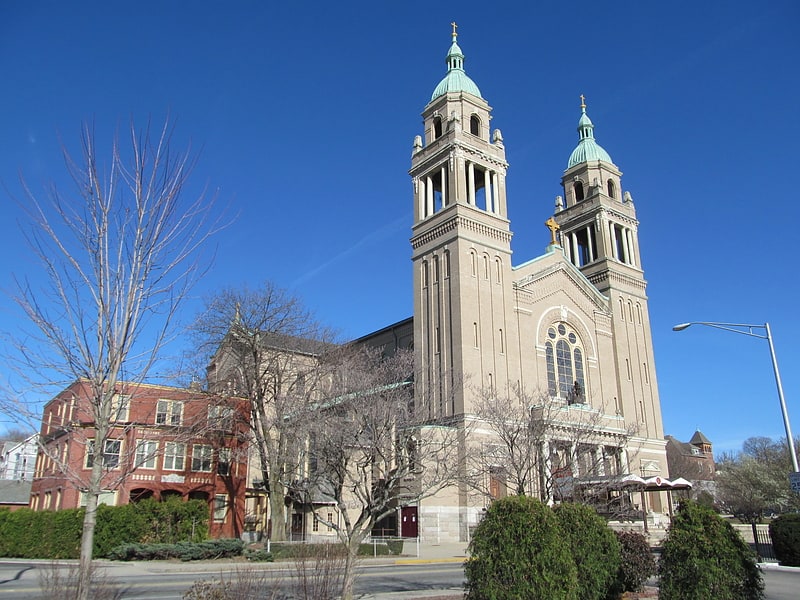
Cultural center in Woonsocket, Rhode Island. St. Ann's Church Complex is now a historic cultural center in Woonsocket, Rhode Island on Cumberland Street. It was formerly a Roman Catholic church within the Diocese of Providence.[7]
Address: 84 Cumberland St, 02895-3343 Woonsocket
Woonsocket Harris Public Library

Public library. Woonsocket Harris Public Library is a public library at 303 Clinton Street in Woonsocket, Rhode Island. Founded in 1866, it is Rhode Island's second public library. Founded by Edward Harris, the library was originally housed at the Harris Institute, which also included an auditorium for traveling lectures. This building has been adapted for use as Woonsocket City Hall. Harris was a major wool manufacturer and abolitionist; he used some of his wealth for philanthropic projects in Woonsocket.
In 1974 the library moved to its current building; this was renovated in 2001.[8]
Address: 303 Clinton St, Woonsocket
Smithfield Friends Meeting House
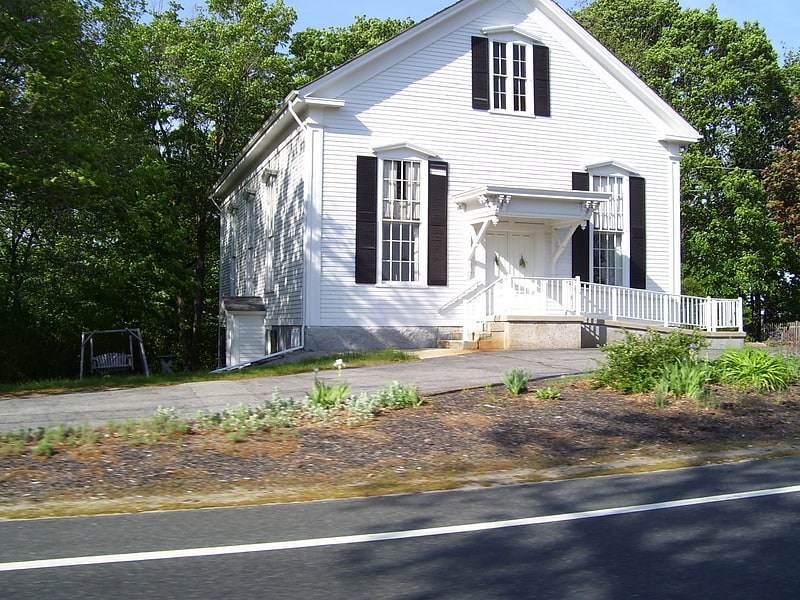
Cemetery. The Smithfield Friends Meeting House, Parsonage and Cemetery, is a Friends Meeting House of the Religious Society of Friends, rebuilt in 1881. It is located at 108 Smithfield Road in Woonsocket, Rhode Island. The meetinghouse is home to one of the oldest Quaker communities in the region.
Rhode Island provided a home to many Quaker refugees in the 17th century, and in the early 18th century a group of "Friends" started this congregation. Their original Meeting House, built in 1719, was connected to a chain of Quaker Meeting Houses that were built along Great Road (near Union Village and Smithfield Road Historic District). It was destroyed by fire in 1881 and replaced by the current structure, a simple wood-frame clapboarded structure with Greek Revival features.
The forested area directly to the north of the meeting house is a natural cemetery. Roughly 300 Friends from the 18th and 19th centuries are buried in this land, although only 100 Friends requested a gravestone or marker. The area is not pesticided or mowed. A natural canopy of trees is allowed to grow over the cemetery. Quaker customs frowned on the use and erection of large gravestones or monuments. They also were "advised to avoid all extravagant expenses" with regard to the passing of a loved one. If the family simply had to have a gravestone, a simple one, no more than 15 inches in height above the ground, was allowed. The name, age and date of death of the deceased were all that were to be inscribed upon the stone.
In the early 19th century, Smithfield meeting struggled with the issue of abolition of slavery. Some Friends, notably Abby Kelley, may have been actively involved with the smuggling of slaves from Southern ports by ship to Providence, then through northern Rhode Island to Worcester, Massachusetts, and on to Canada. Other, quietist Friends believed in not breaking an earthly government's law.
Smithfield Friends Meeting became a Guerneyite (pastoral) meeting during New England's schism in the early 19th century. The New England schism ended in 1945. Smithfield continues to be a pastoral meeting, although the practice has become less common among New England Friends.[9]
Address: 108 Smithfield Rd, 02895-6283 Woonsocket
St. Andrew's Episcopal Chapel

Church in Woonsocket, Rhode Island. St. Andrew's Episcopal Chapel is an historic Episcopal church located at 576 Fairmont Street in Woonsocket, Rhode Island.
The late-Victorian style church was designed by George W. Spaulding in 1894 as "a mission chapel by St. James Episcopal Parish of Woonsocket in 1894 to serve the new and growing working-class Fairmount neighborhood. Many of the building components were donated by area residents and corporations. The lot was a gift of the Fairmount Land Company; architect and St. James parishioner George Spaulding donated the plans and building specifications; the Granite Pressed Brick Company, also of Woonsocket, donated the distinctive pressed concrete brick; Edgar H. Slocum provided painting services free of charge; Hark Hough provided the bell and in 1897, the Gilbert & Butler Company of Boston gave the pipe organ." The building was added to the National Register of Historic Places in 1982 as part of the South Main Street Historic District of Woonsocket.
The Episcopal congregation sold the structure prior to 1981 and it has since passed to a number of other congregations. As of 2008 was used as a holistic counseling center.
As of 2013 it has become a private residence.[10]
Woonsocket District Courthouse
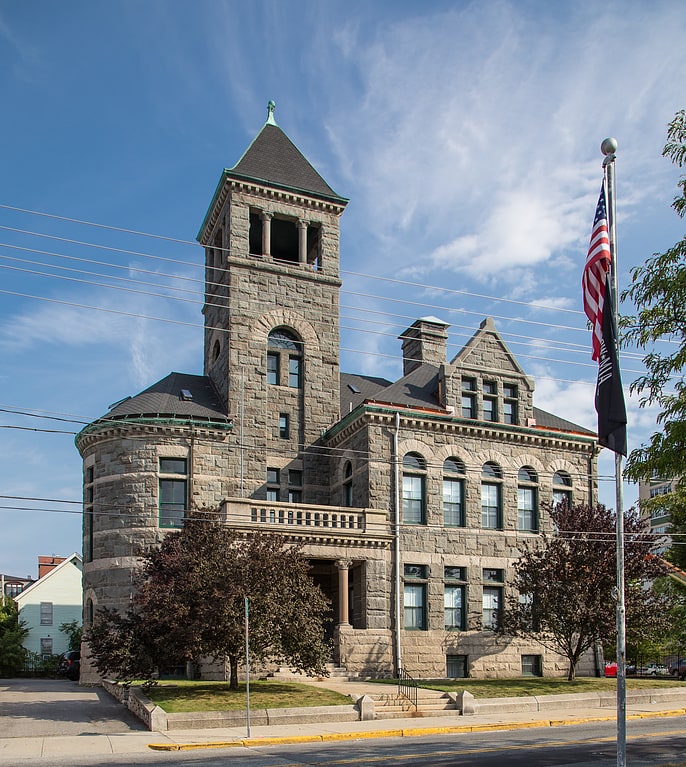
Court buildings. The Woonsocket District Courthouse is an historic court building on 24 Front Street in Woonsocket, Rhode Island.
The courthouse, a two-story stone structure, was designed in 1894 in a Romanesque style by William R. Walker & Son and built by Norton & Allaire. The building served as the location for the Fifth Division of the District Court, until it merged into Providence's 6th Division. The building has been repurposed into residences.
The courthouse was listed on the National Register of Historic Places in 1982.[11]
Address: 85 Front St, Woonsocket
American-French Genealogical Society
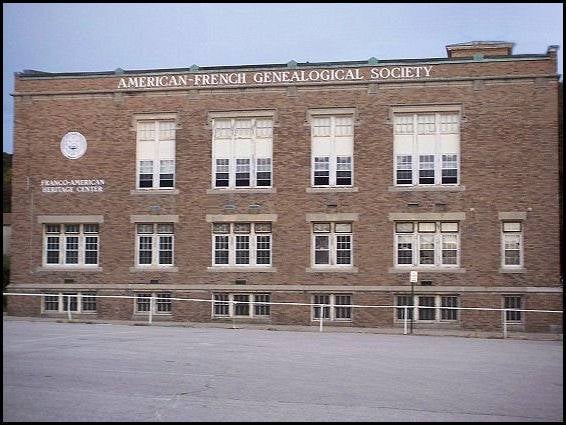
Library
Address: 78 Earle St, Woonsocket
United States Post Office
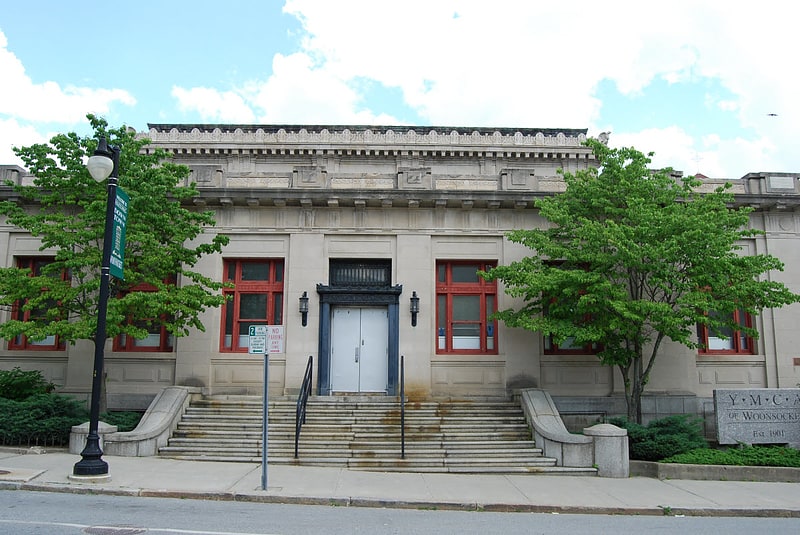
Post office in Woonsocket, Rhode Island. The U.S. Post Office is a historic former post office building at 295 Main Street in Woonsocket, Rhode Island. The single-story masonry building was built 1910-12 and served as Woonsocket's main post office until 1975.
The building was added to the National Register of Historic Places in 1979. It is now part of the Woonsocket YMCA.[12]
Market Square
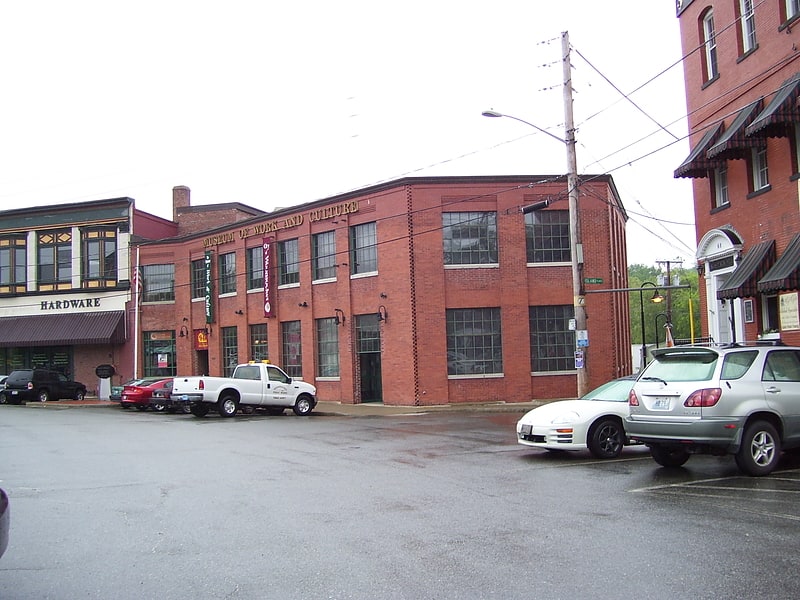
Museum in Woonsocket, Rhode Island. The Museum of Work and Culture is a museum in Woonsocket, Rhode Island, that features exhibits focusing on the city's textile manufacturing heritage. The museum is operated by the Rhode Island Historical Society and located at 42 South Main Street in Market Square in the Blackstone River Valley National Heritage Corridor.[13]
Address: 42 South Main Street, Woonsocket
Hanora Mills
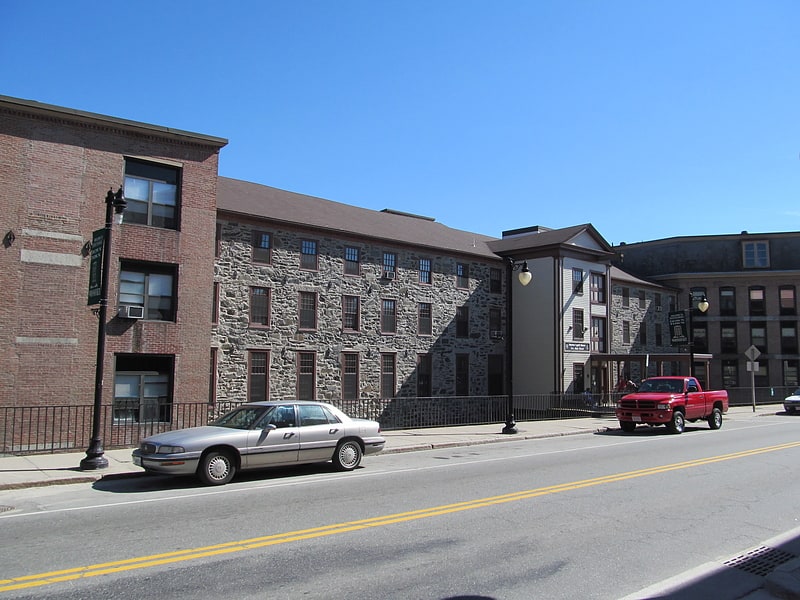
Building in Woonsocket, Rhode Island. The Hanora Mills are a historic textile mill complex the center of Woonsocket, Rhode Island.
The oldest part of the mill complex was constructed in brick around 1827 by the Ballou family, and it was named Harrison Mills. The mill was a water powered facility with a specially dug trench. In the mid-nineteenth century, Henry Lippitt's company purchased the mill from the Ballous, and it became known as Lippitt Mills. There are various other buildings which were gradually constructed as the site expanded with the latest dating to the turn of the twentieth century. The mill was renamed Hanora Mills in the twentieth century after the Lippitts sold the site. The mills produced woolen textiles until 1975 when the facility was closed. Several of the buildings feature a Greek Revival style, and the whole site was added to the National Register of Historic Places in 1982. The historic mill buildings were renovated into apartments for the elderly in the 1980s.[14]